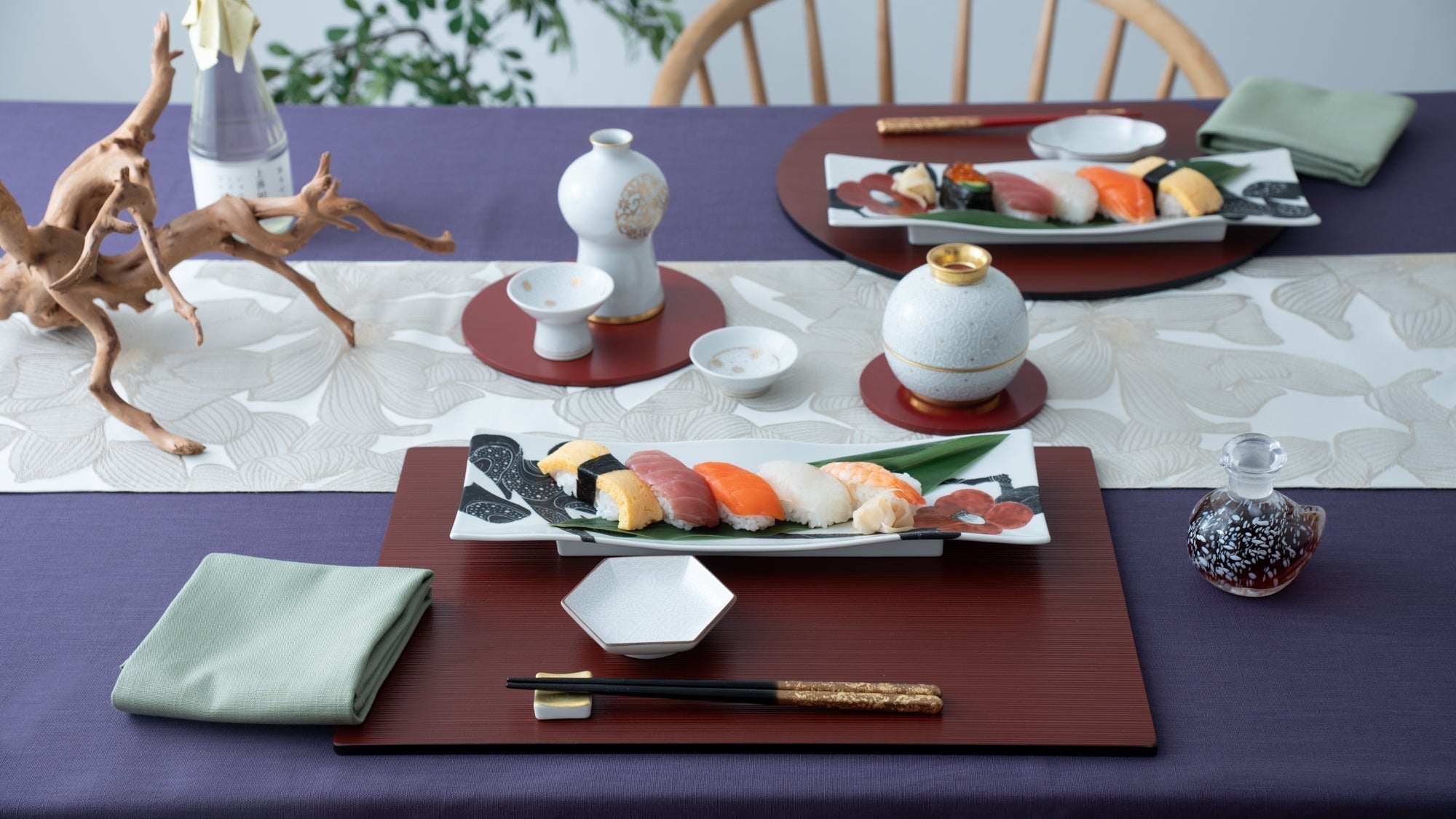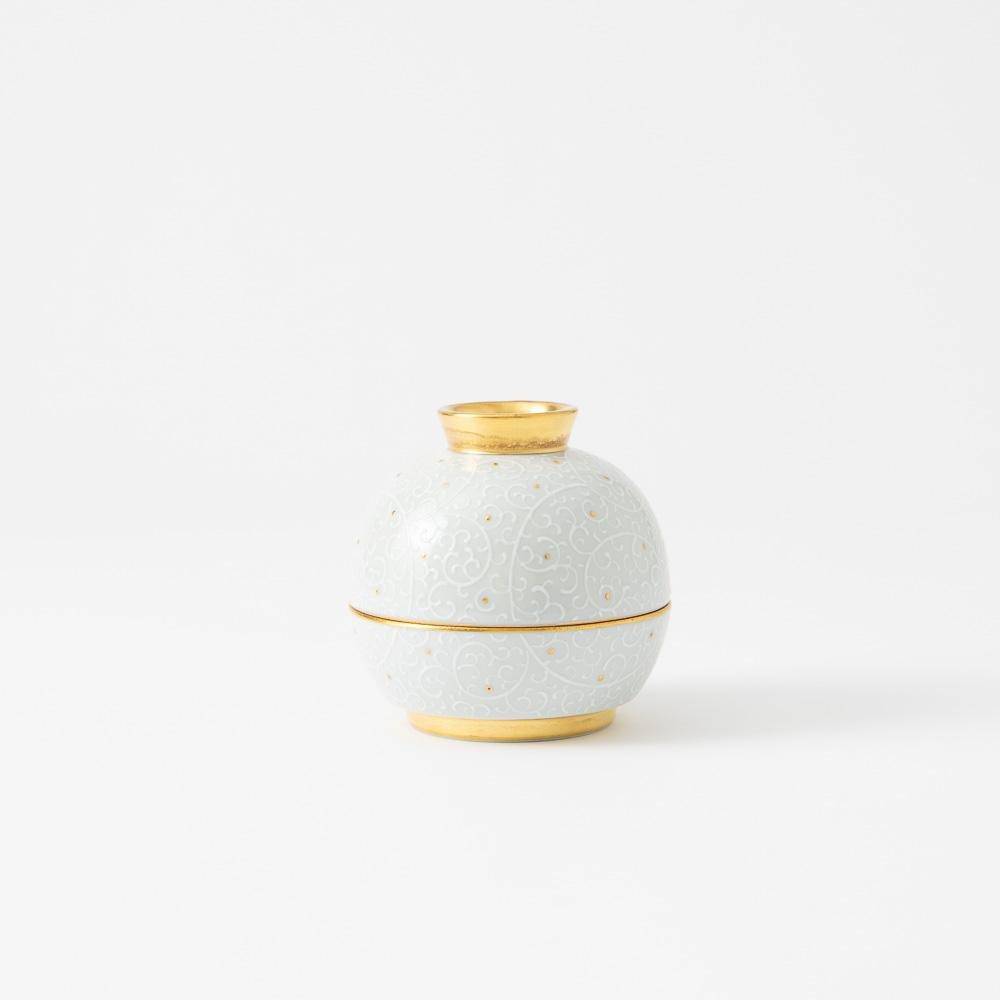
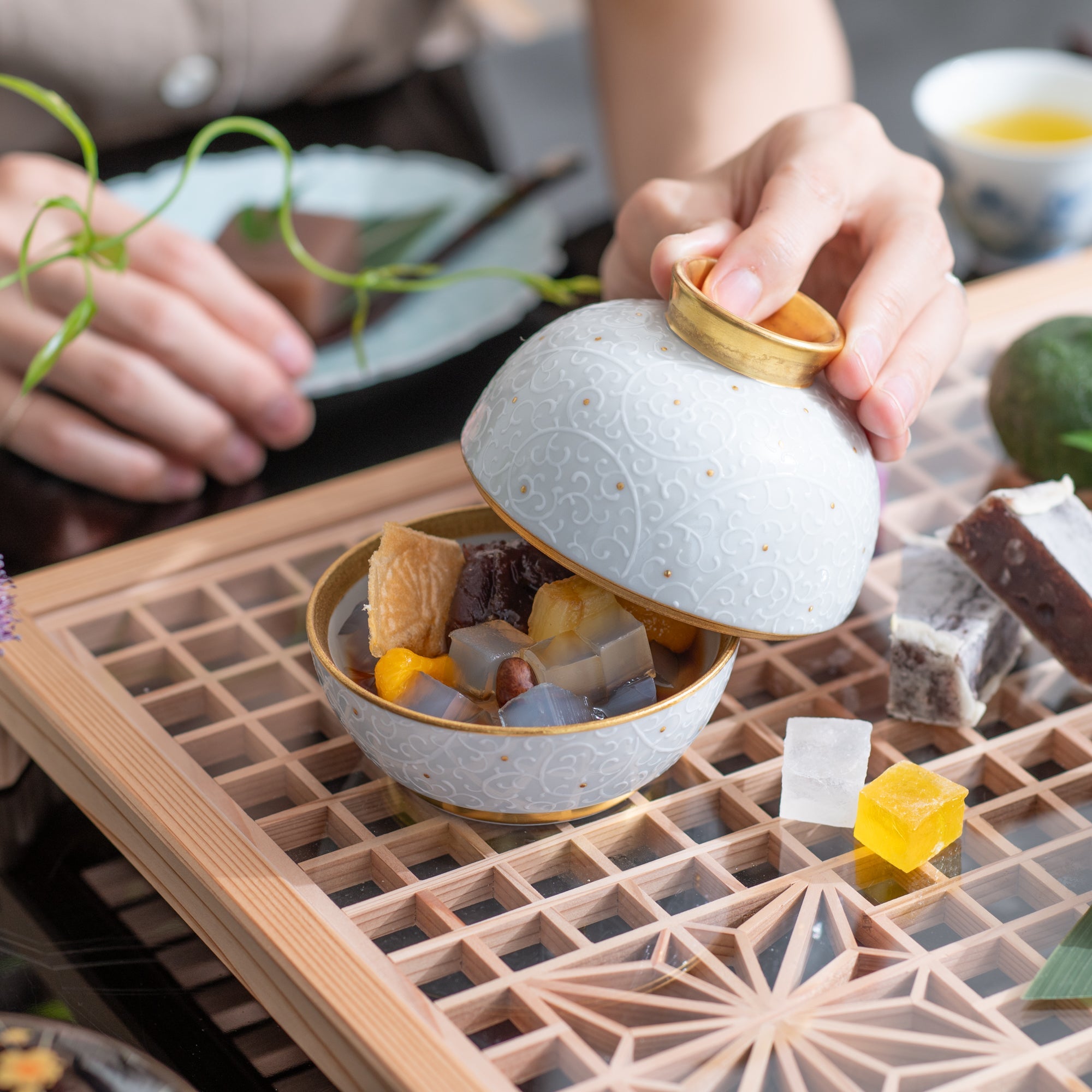
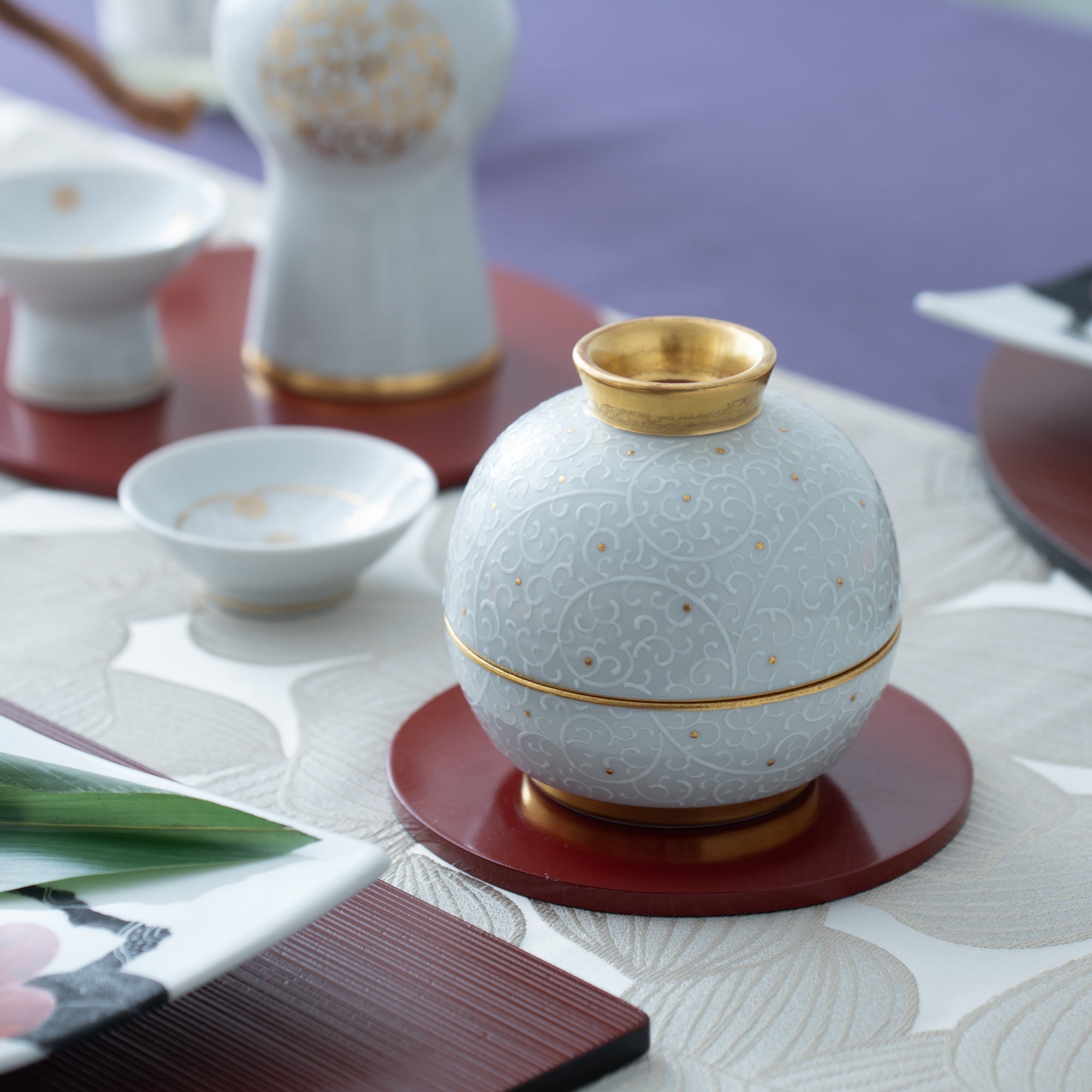
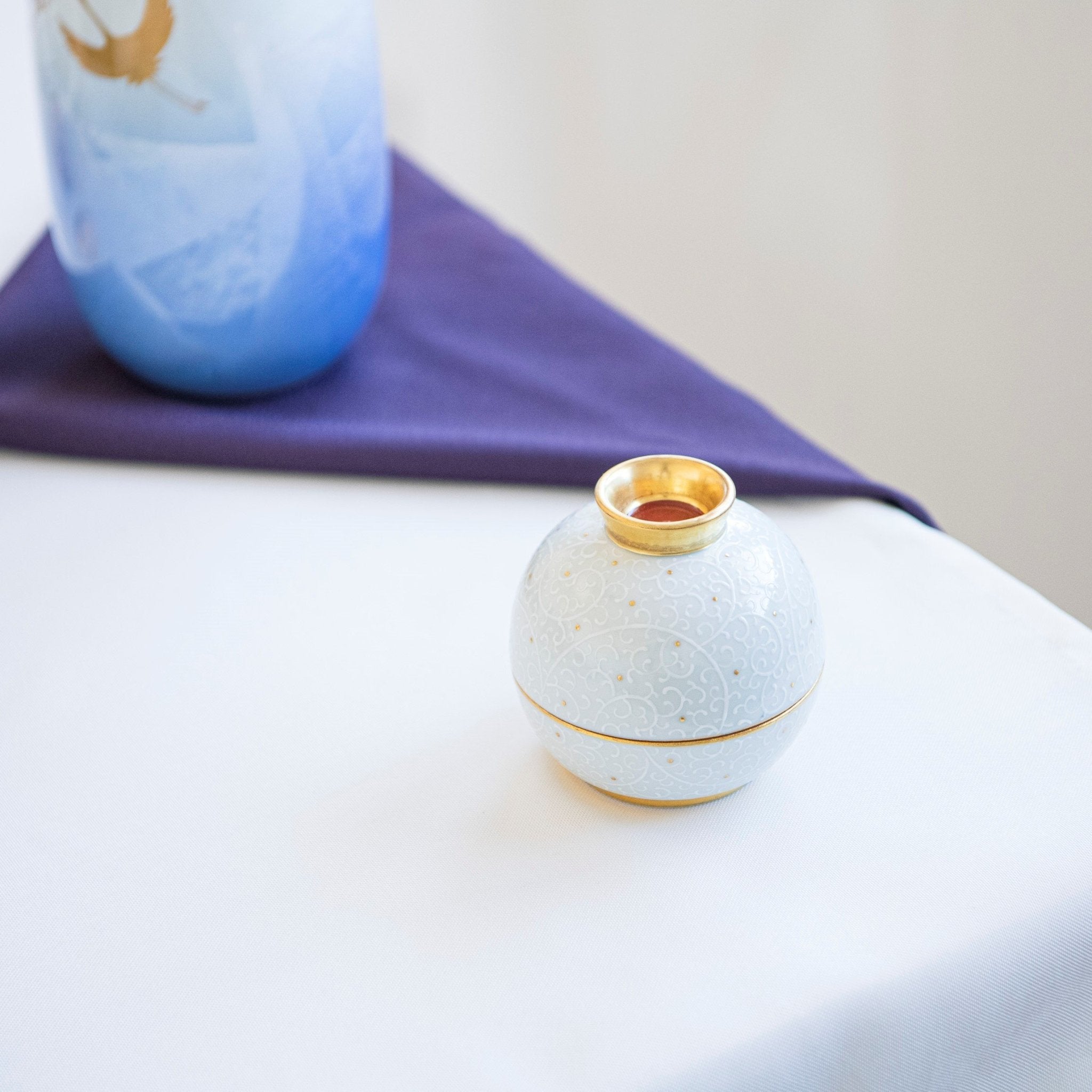
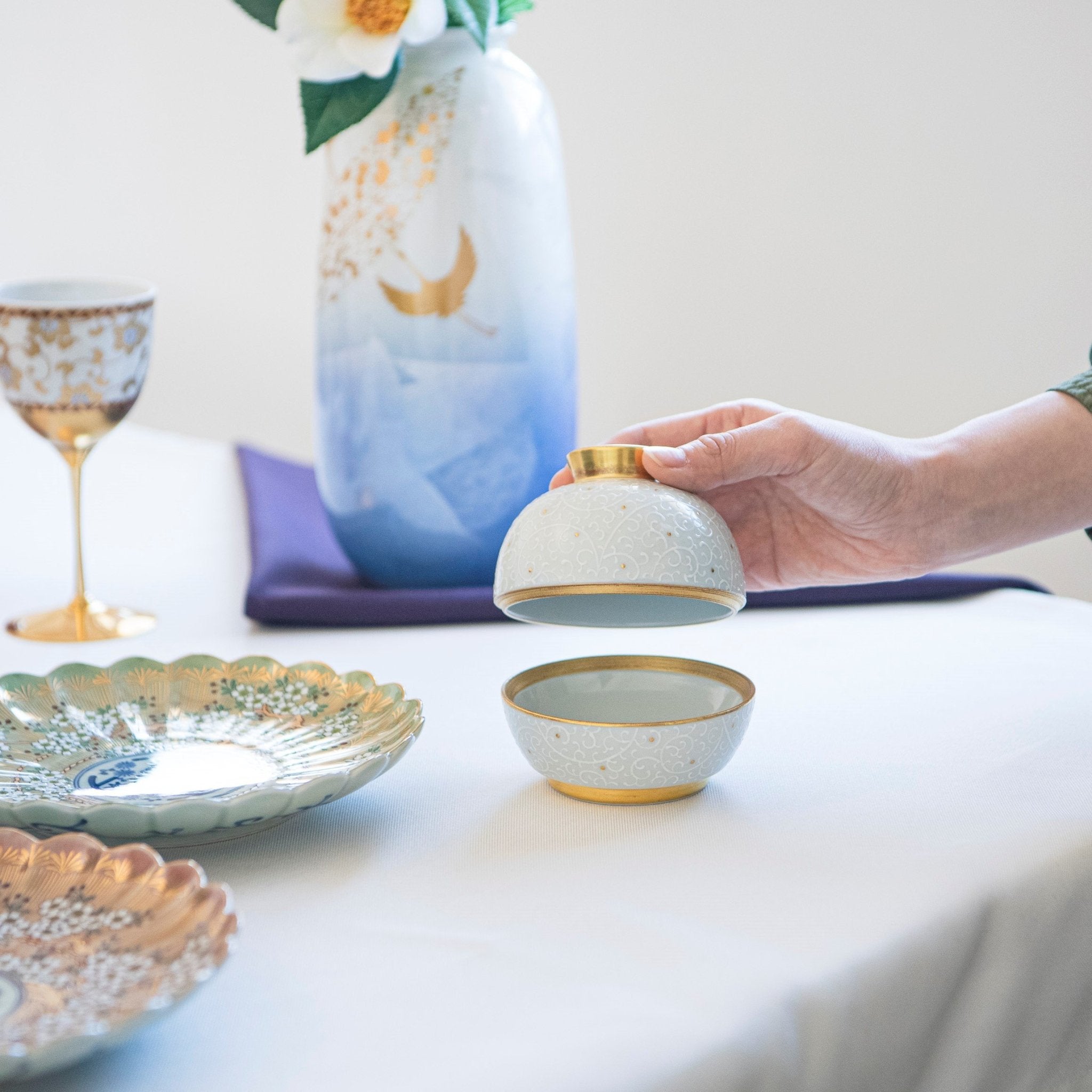
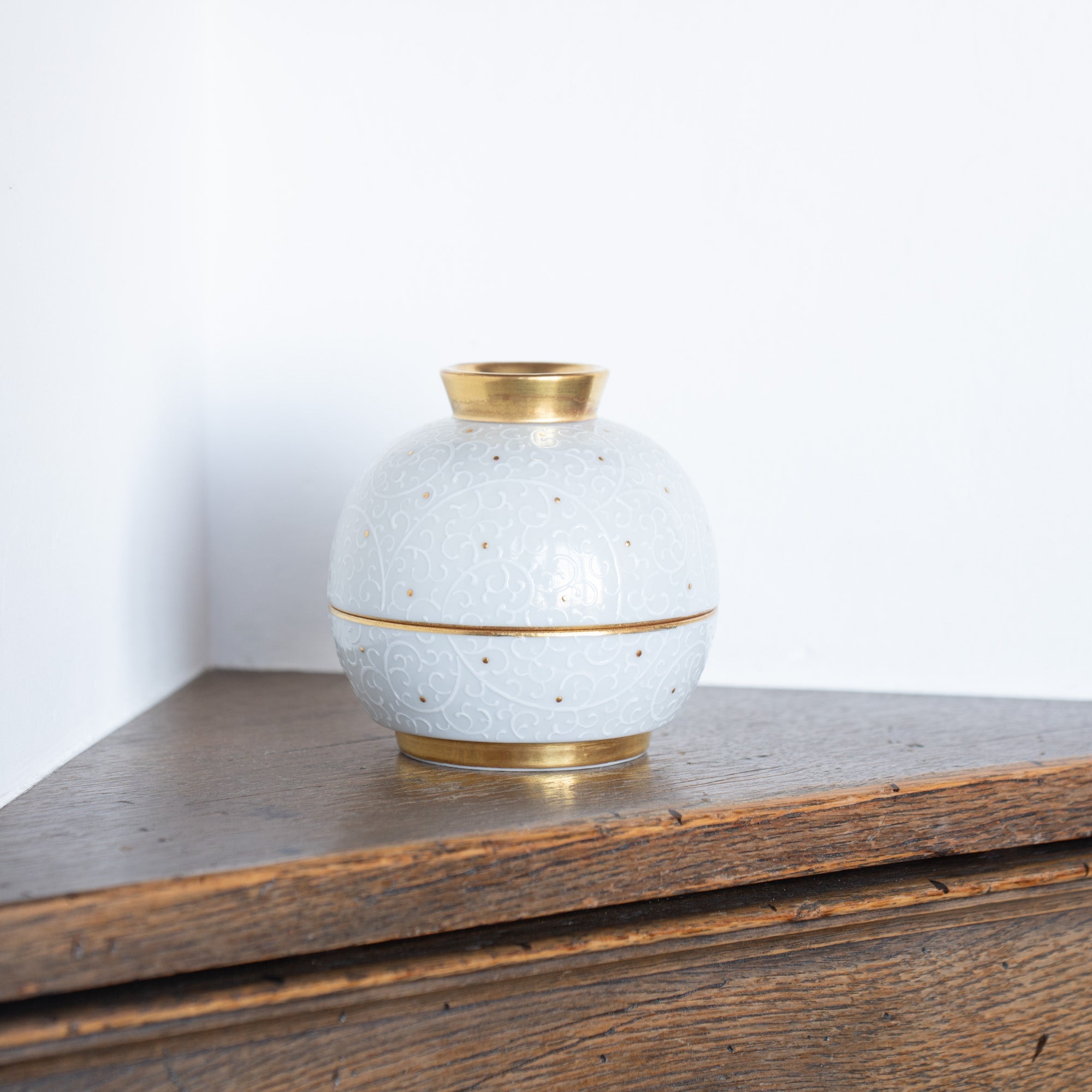
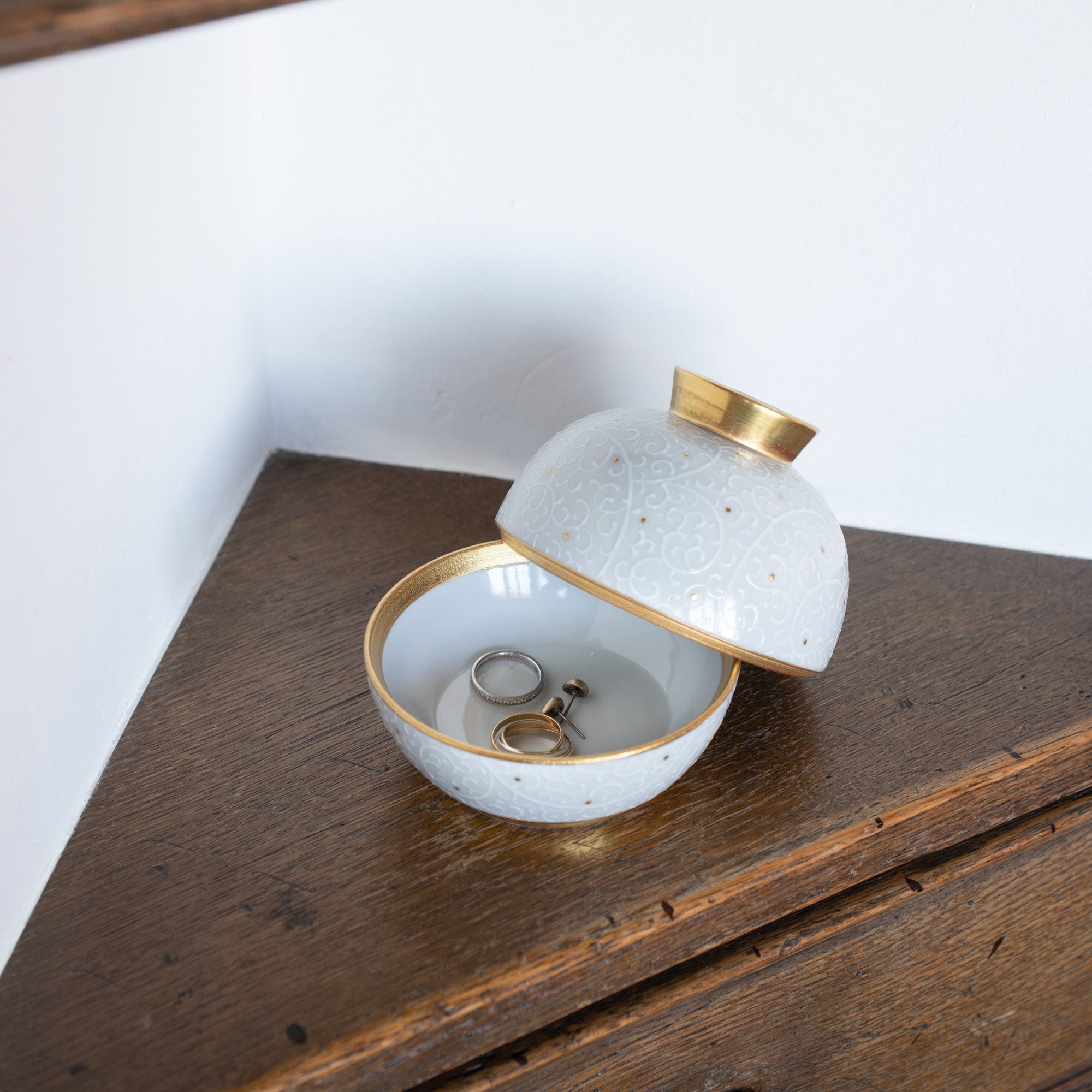
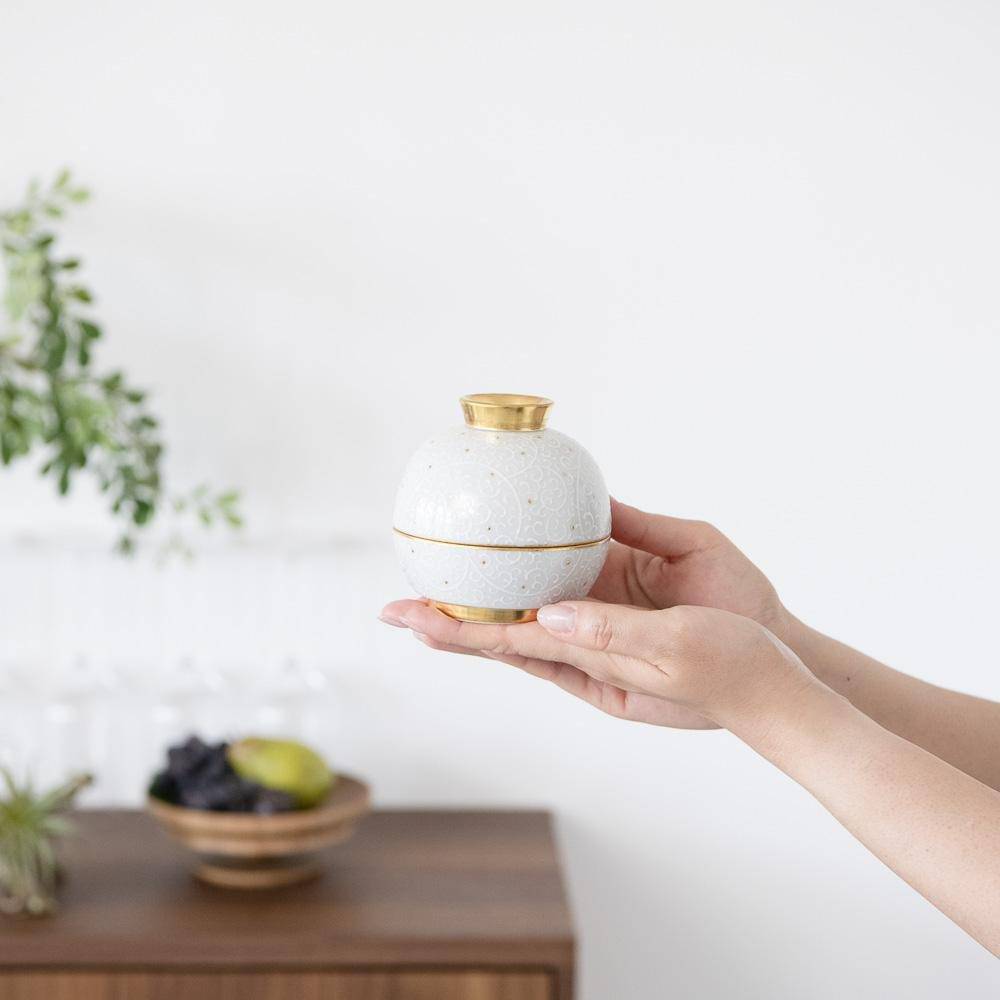
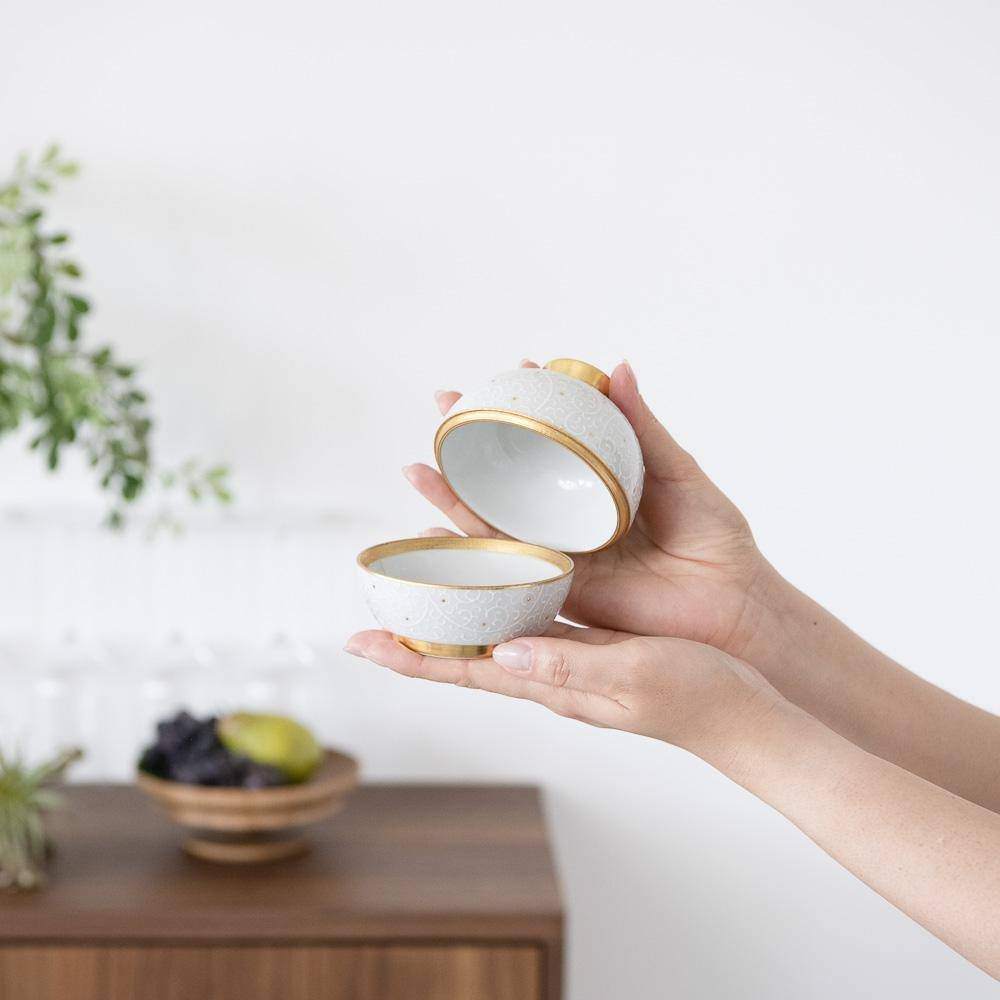
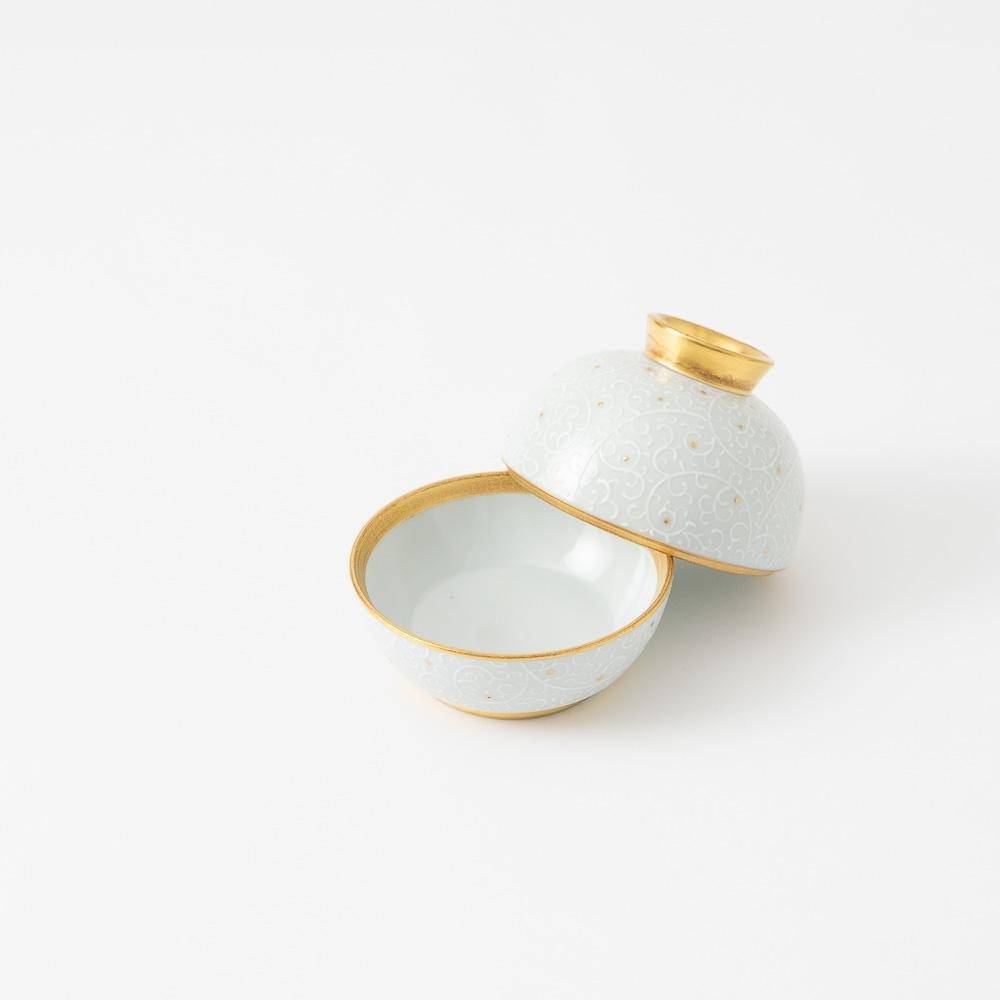
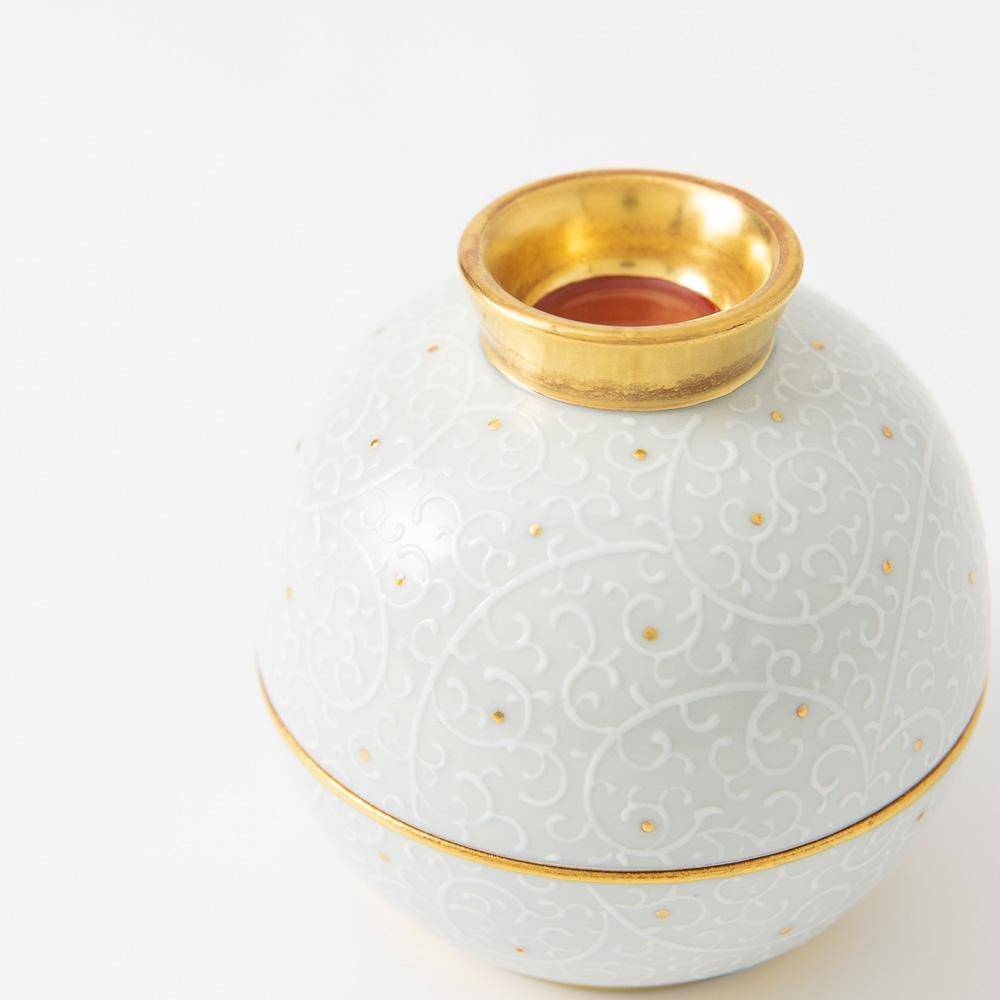
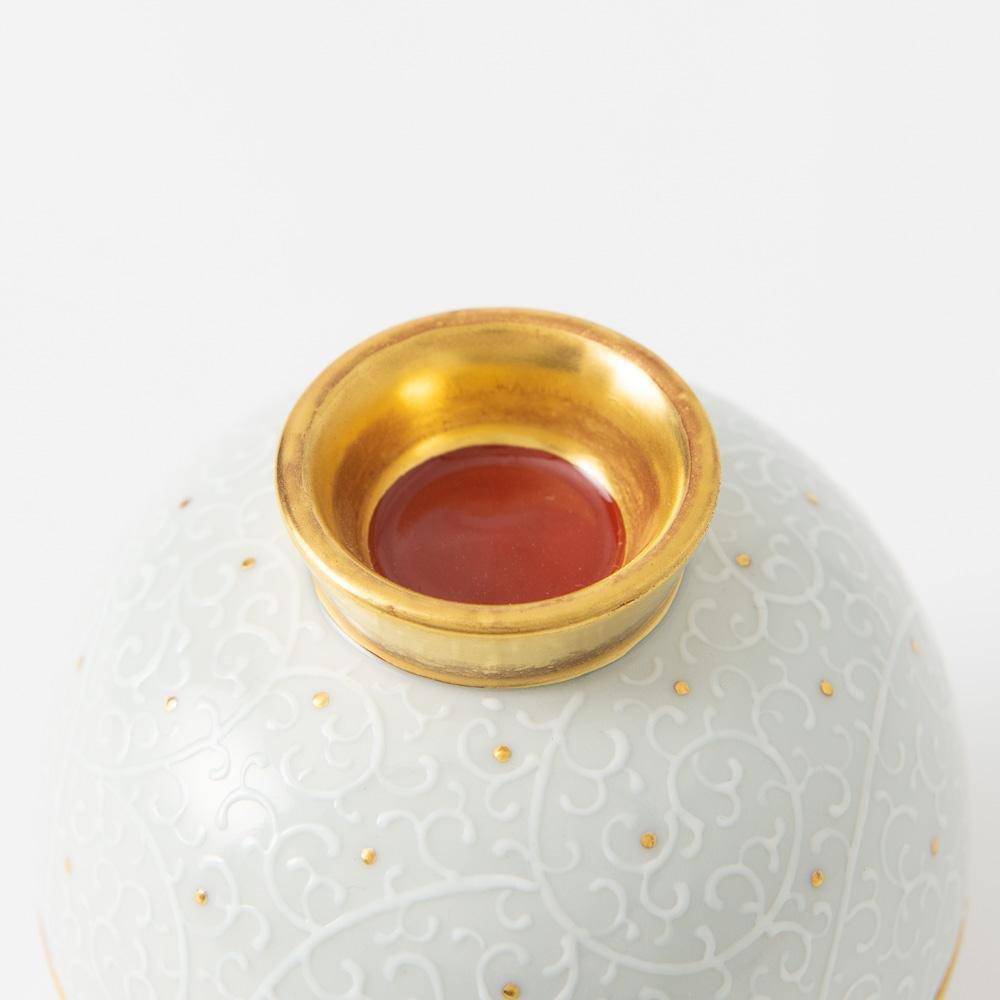
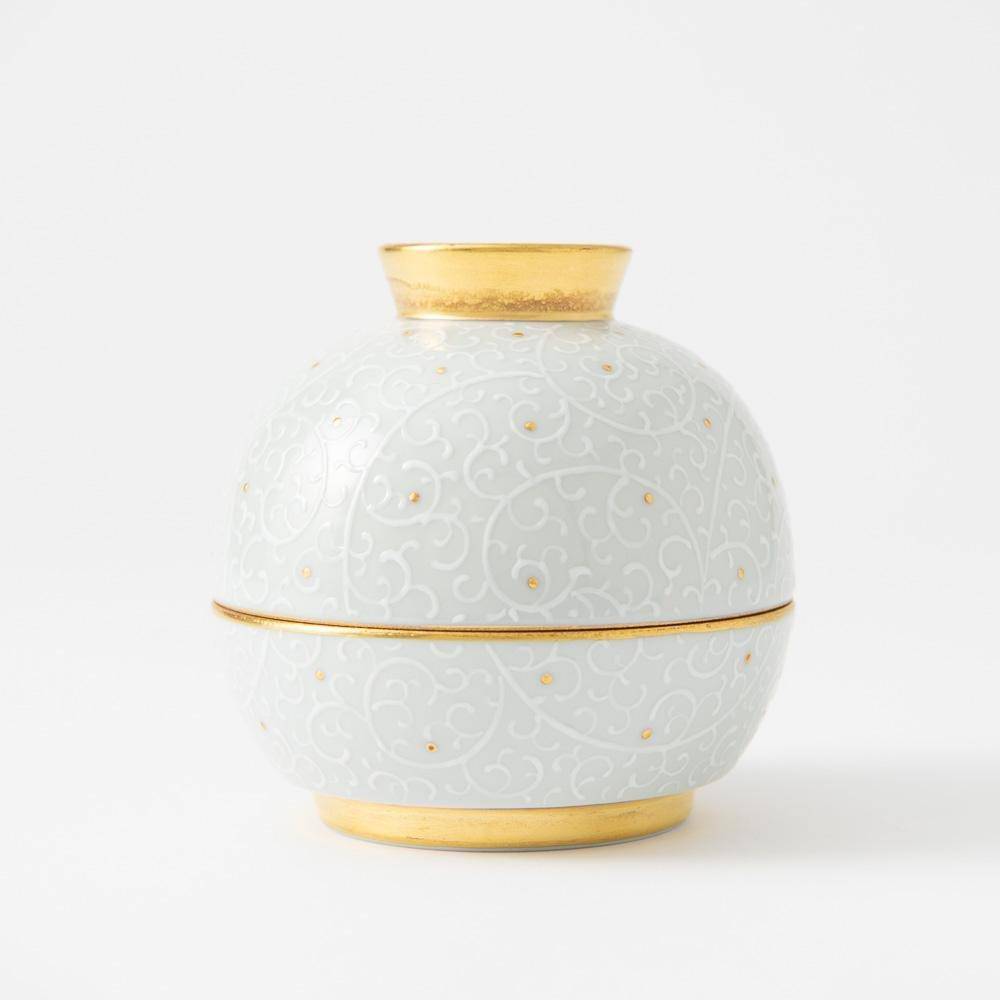
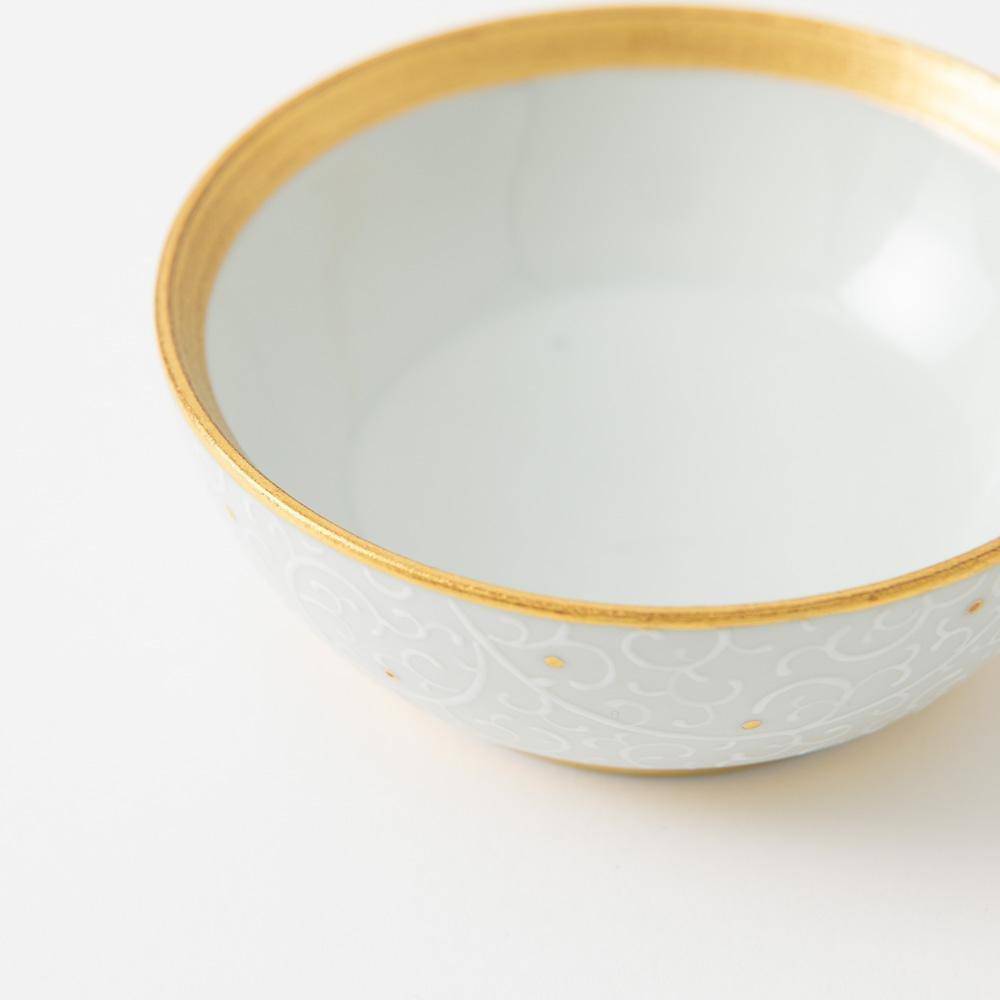
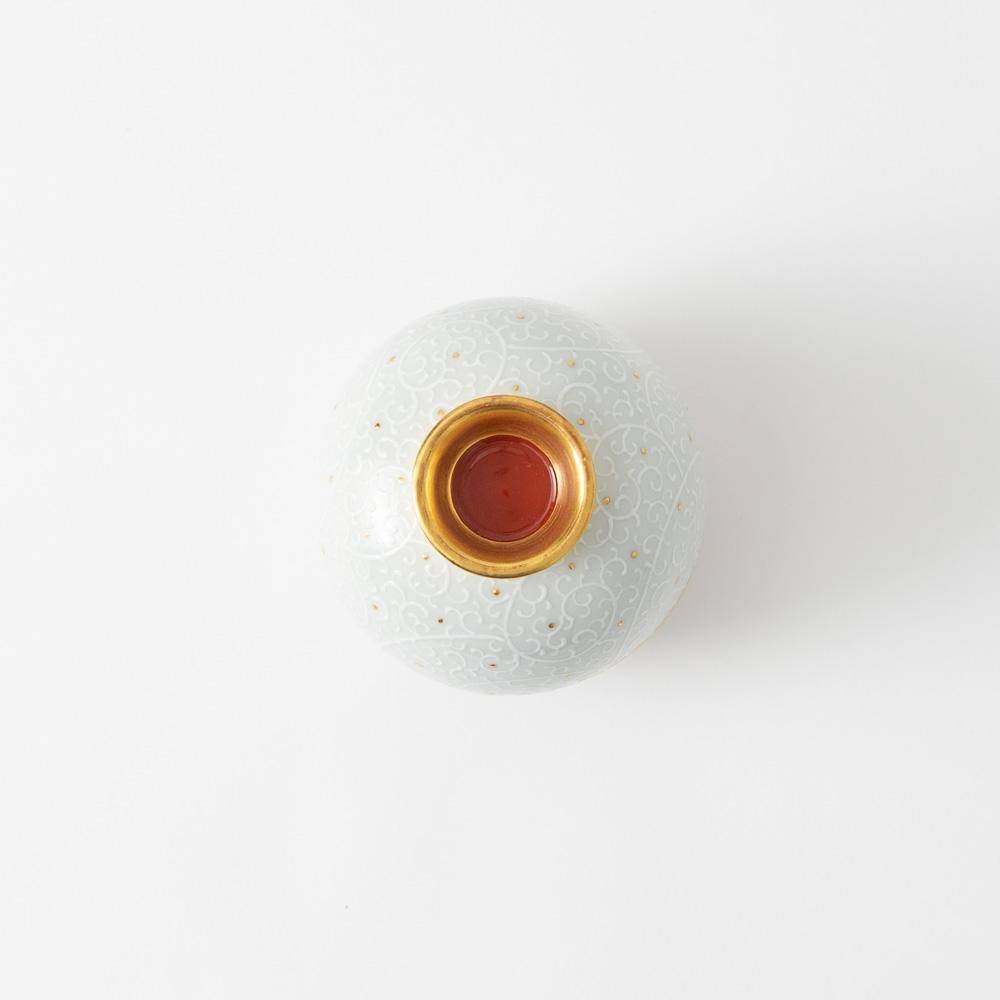
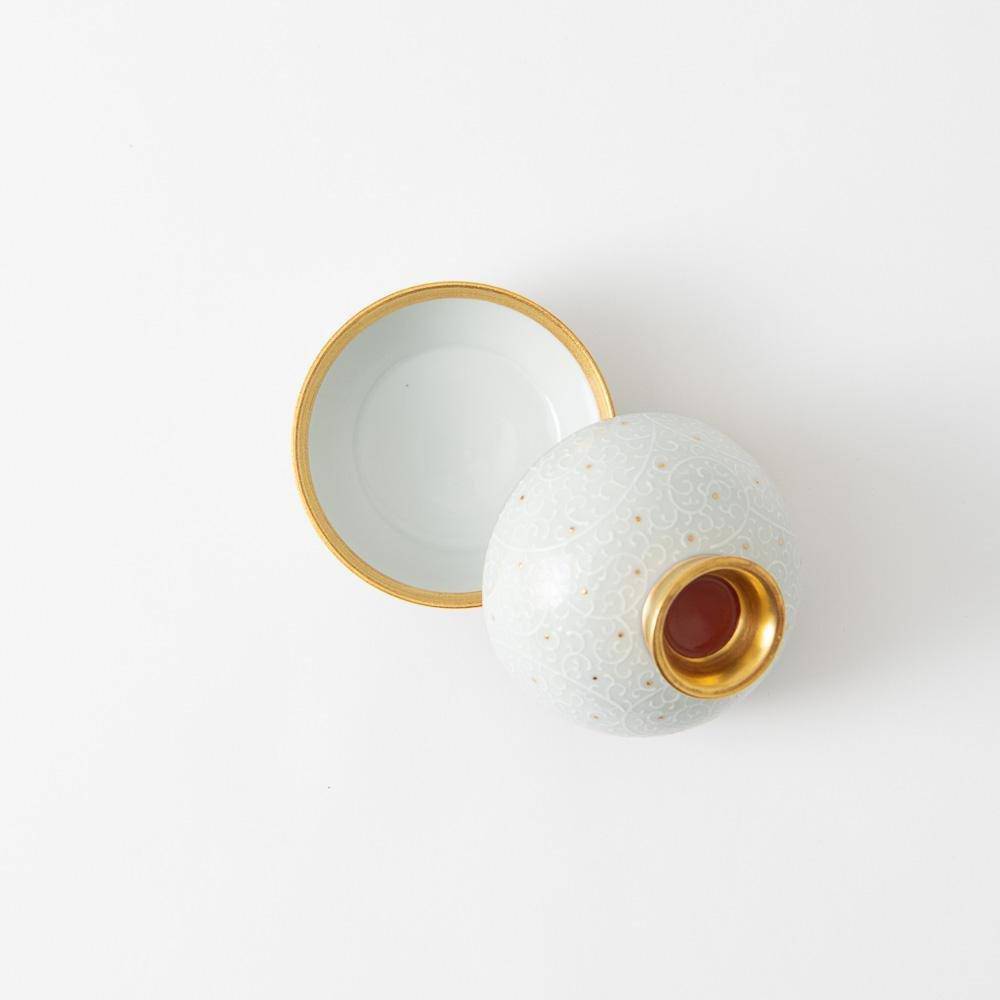
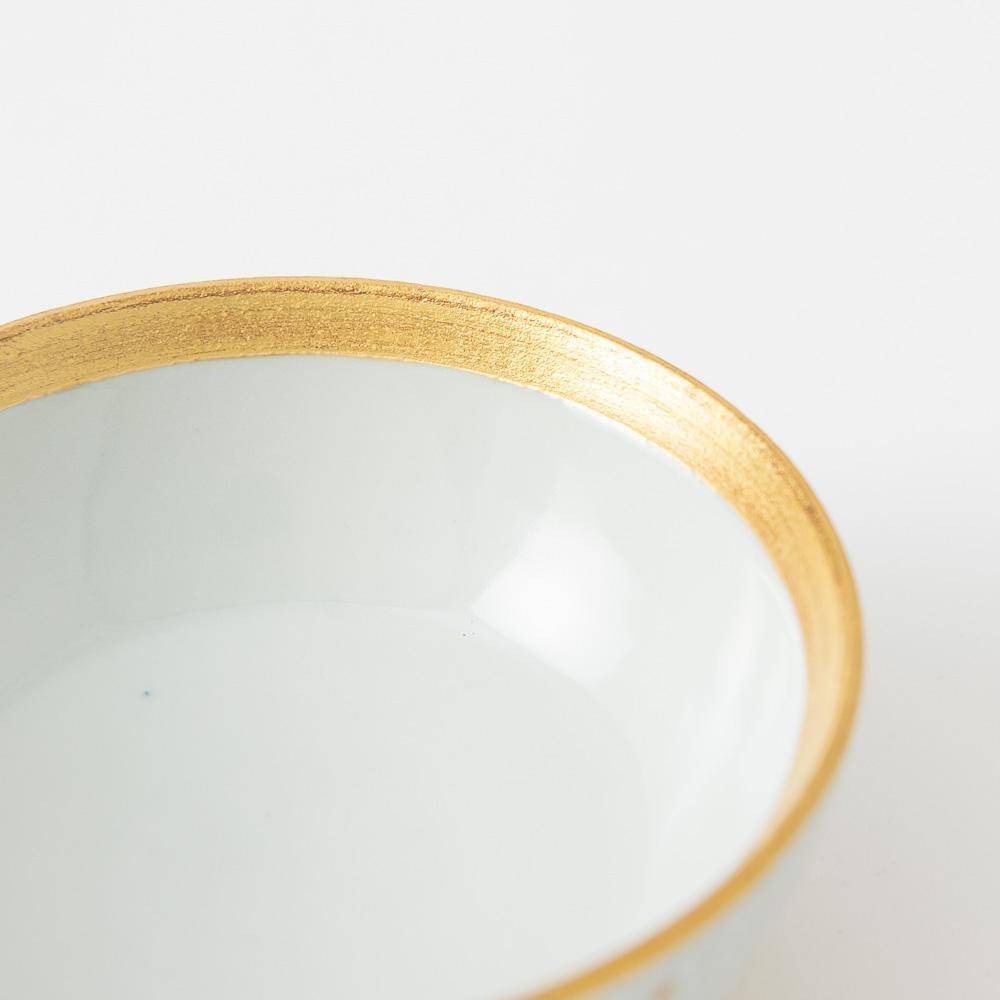
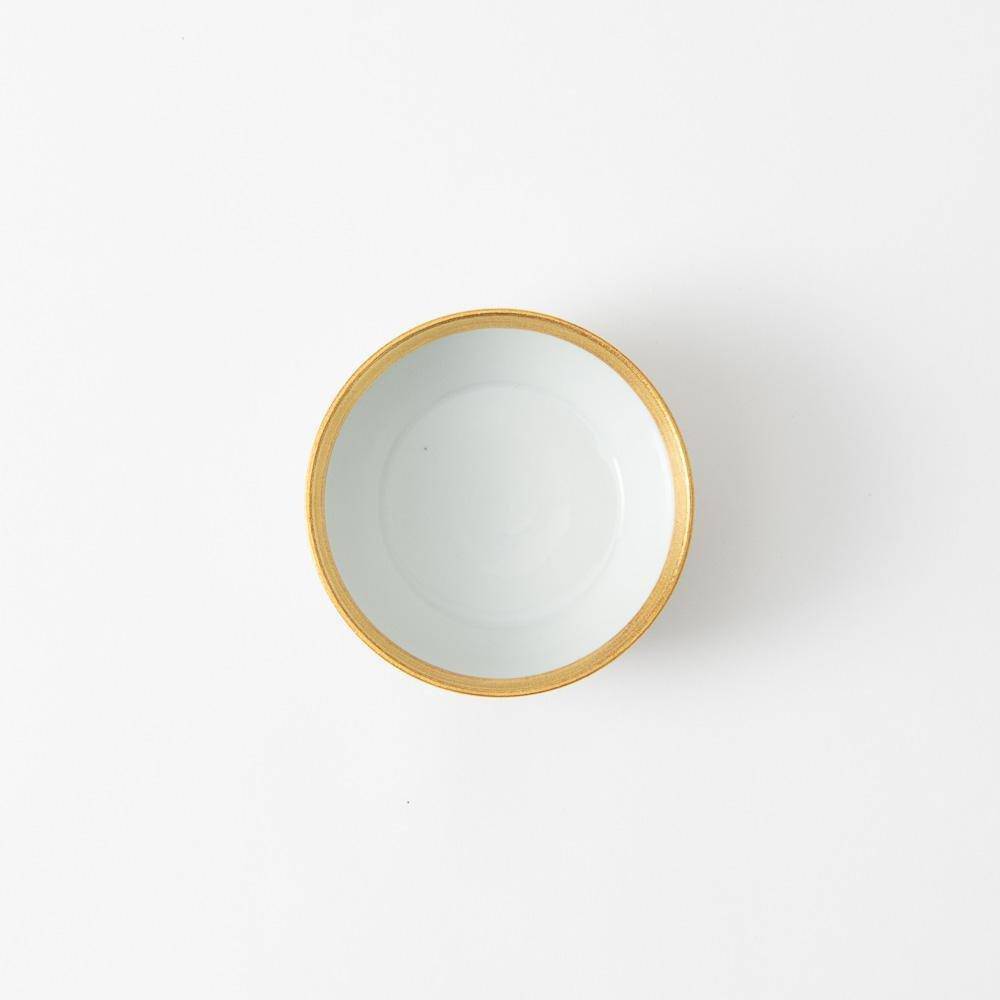
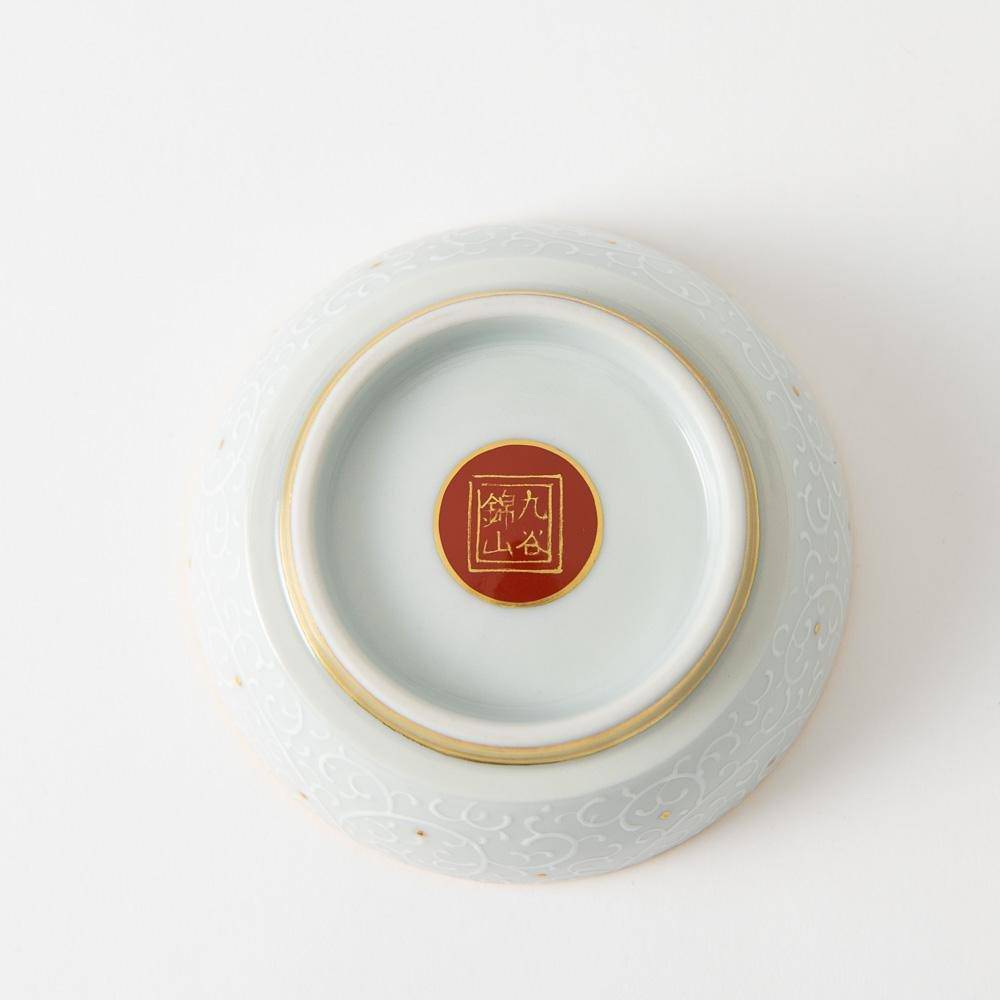
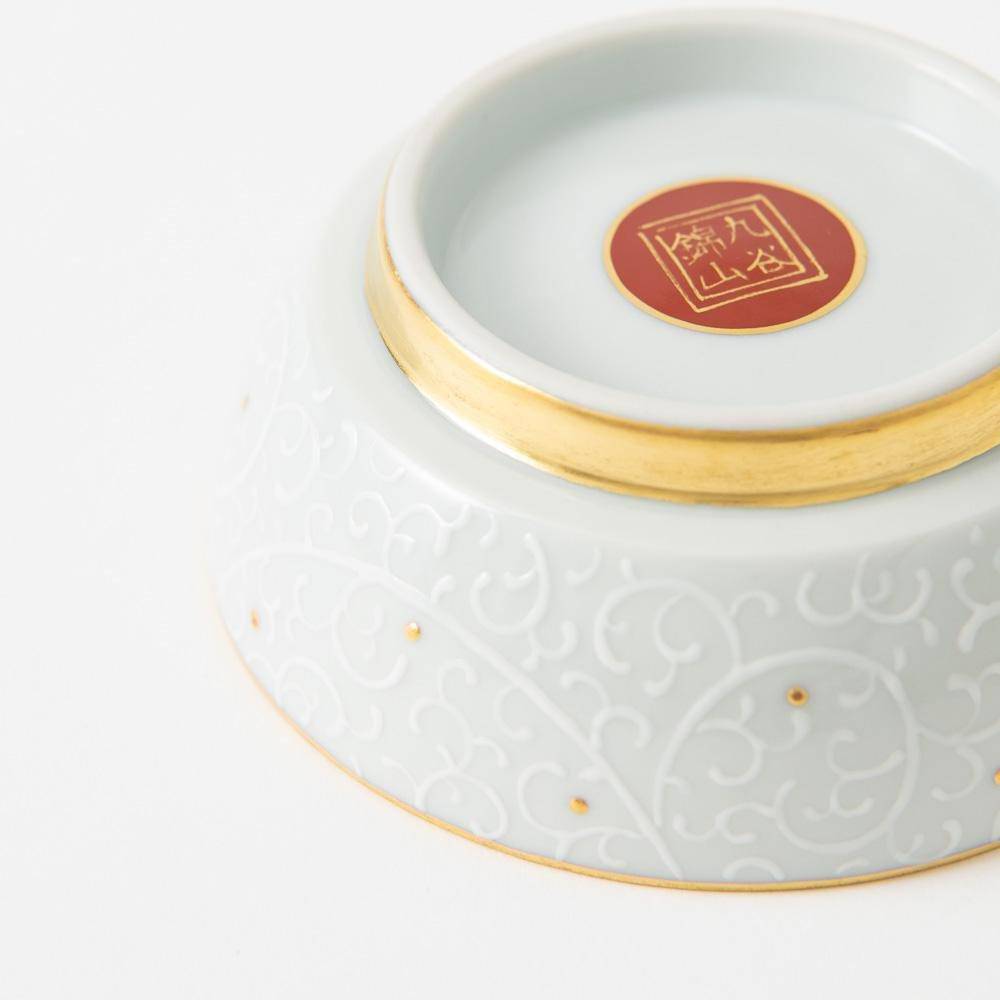
Gilded White Arabesque Sphere Box
Estimated Shipping Widget will be displayed here!
This premium porcelain box features an arabesque pattern on the surface decorated with a technique called hakumori, a technique of overglaze painting in which white paint is raised in a convex shape. By painting delicate arabesque patterns in white, it is possible to express a subtle contrast with the white of the base.
It is handcrafted by Kinzan Kiln and especially excels in Kinsai, one of the famous Kutani ware's glazing techniques with a gold leaf. Since the first generation, who were skilled in painting gold brocade, Kinsai has been a characteristic of the kiln for generations.
This beautiful box, carefully decorated with a hundred decades of history and traditional craftsmanship techniques, allows each person to become an artist and freely create a luxurious lifestyle.
It is also recommended to put tea leaves, sugars, confectionaries, and small important things such as keys and accessories.
DETAILS
| Quantity | 1 Box |
| Size | 9 cm (3.54 in) x H 9 cm (3.54 in) |
| Material | Porcelain |
| Microwave | No |
| Dishwasher | No |
Maker / Brand
Kinzan kiln was established in 1906 and has continued to produce Kutani ware for about 110 years. Among the traditional techniques of Kutani ware, the Kiln especially excels in Kinsai, glaze painting with gold. In addition to the traditional techniques and innovative trials by artists, Kinzan kiln continues to create a new world of colorful Kutani ware by exploring various techniques and materials.
Crafts
Kutani ware is a pottery produced in the Kaga region of Ishikawa Prefecture and it has a history of over 350 years. It is characterized by the heavy brilliance of the five colors of green, yellow, red, purple, and navy blue that are applied to the bold and daring lines. Its long history has evolved through the tireless efforts and enthusiasm of people who have sought innovation while maintaining tradition.
The beauty of the various styles and methods of painting is known as "Japan Kutani" and is highly regarded around the world.
Choose options




















Estimated Shipping Widget will be displayed here!
Boxes
Beautifully decorated and versatile, Japanese boxes bring a touch of traditional charm to your home or office decor. This handcrafted collection includes candy boxes and spice containers, ideal for holding sweets and condiments. Their elegant and multifunctional designs make them perfect for repurposing as jewelry boxes, desk organizers, or stylish storage for small essentials.
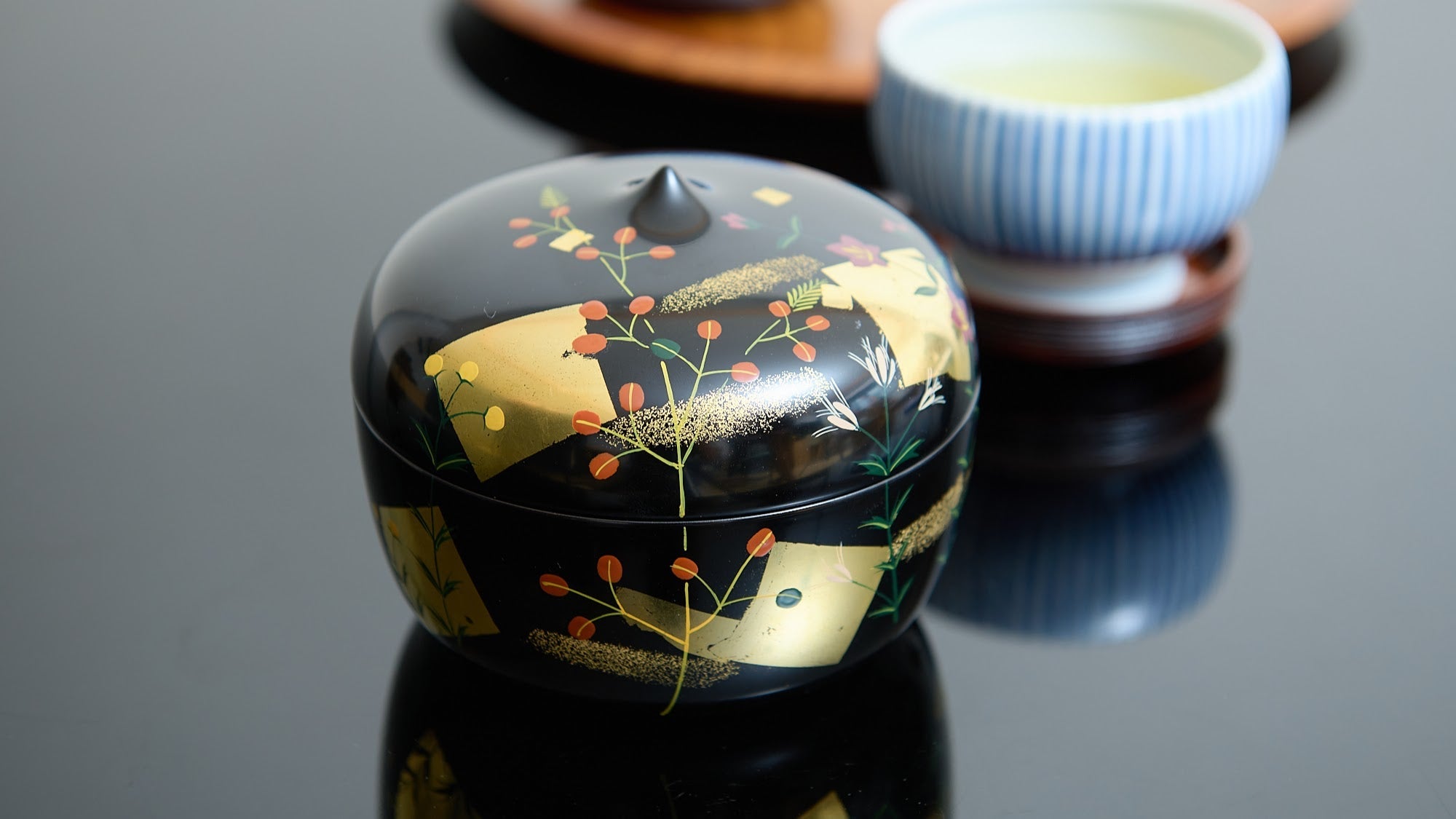
Kinsai
Kinsai refers to techniques used to apply gold leaf or gold paint to ceramics. Both terms also refer to the works produced by these techniques. Gold leaf or paint is applied over the ceramics’ glaze or overglaze decoration and then fired at a lower temperature than the overglaze itself.
Gold leaf and gold paint are valuable materials. In addition, gold leaf is very thin and particularly difficult to handle. Works flawlessly decorated with these materials reveal the extraordinary skill of the artisan.
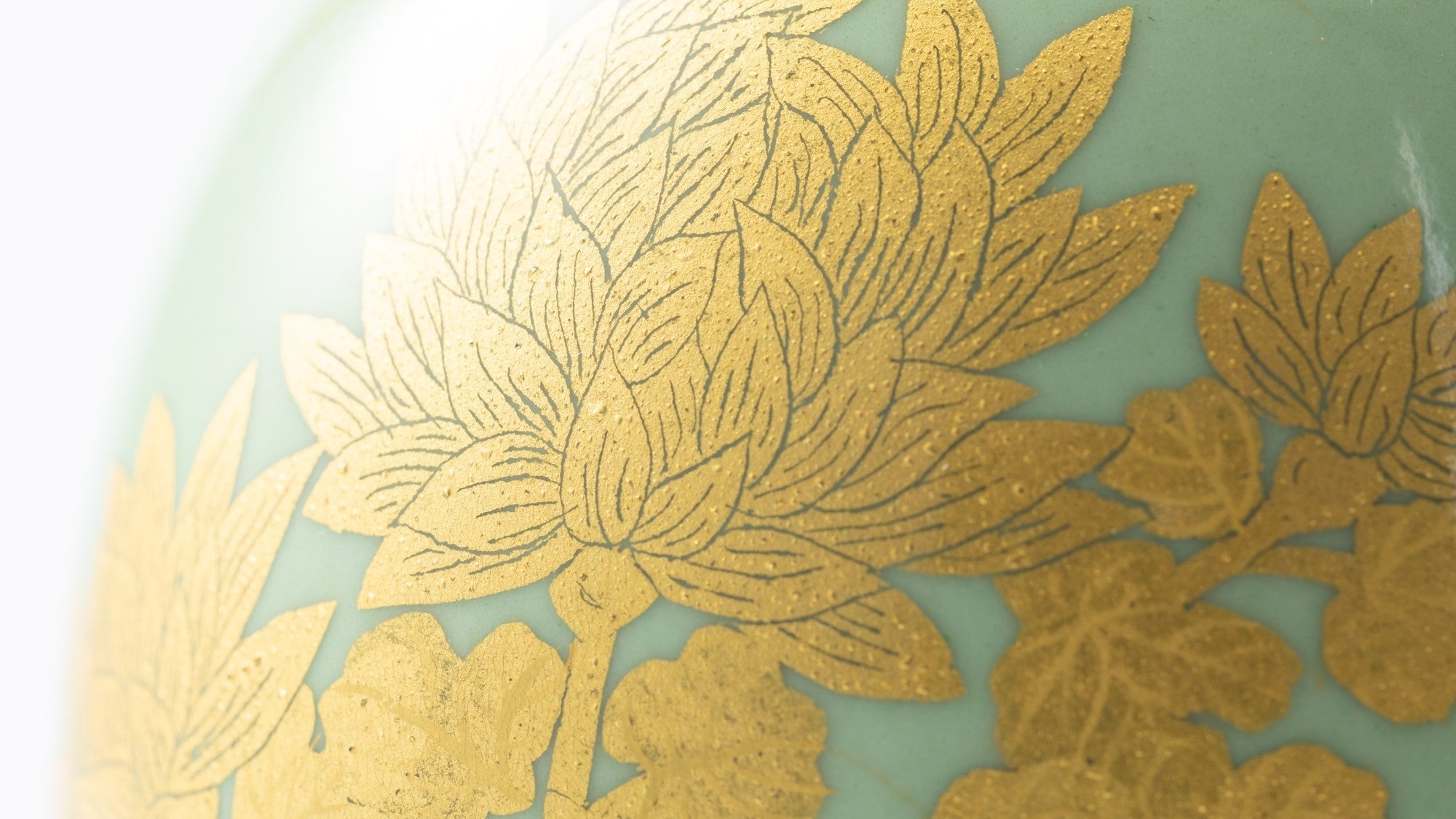
The Japanese World of Gold
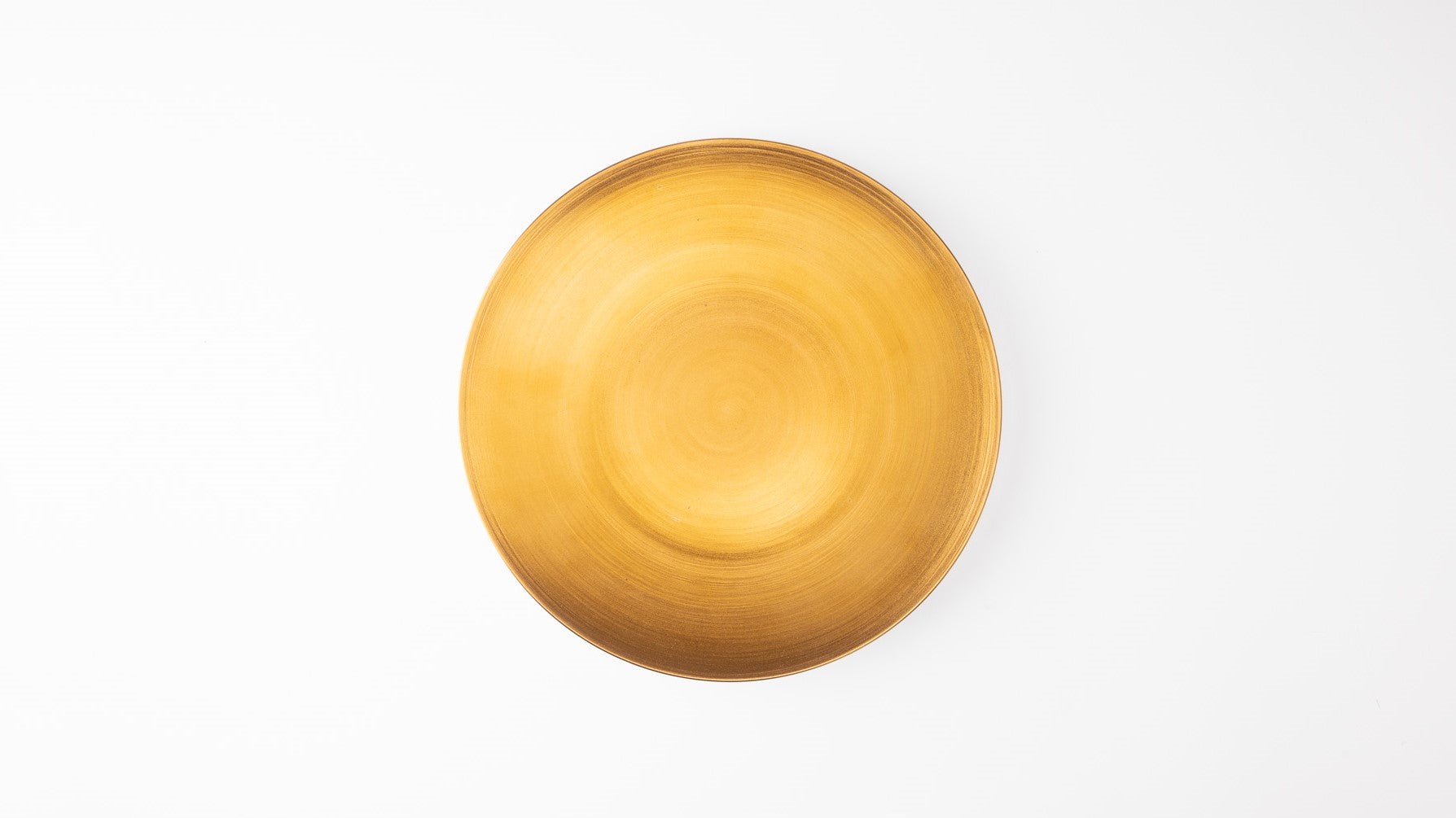
Wagashi Day with Nabeshima Celadon
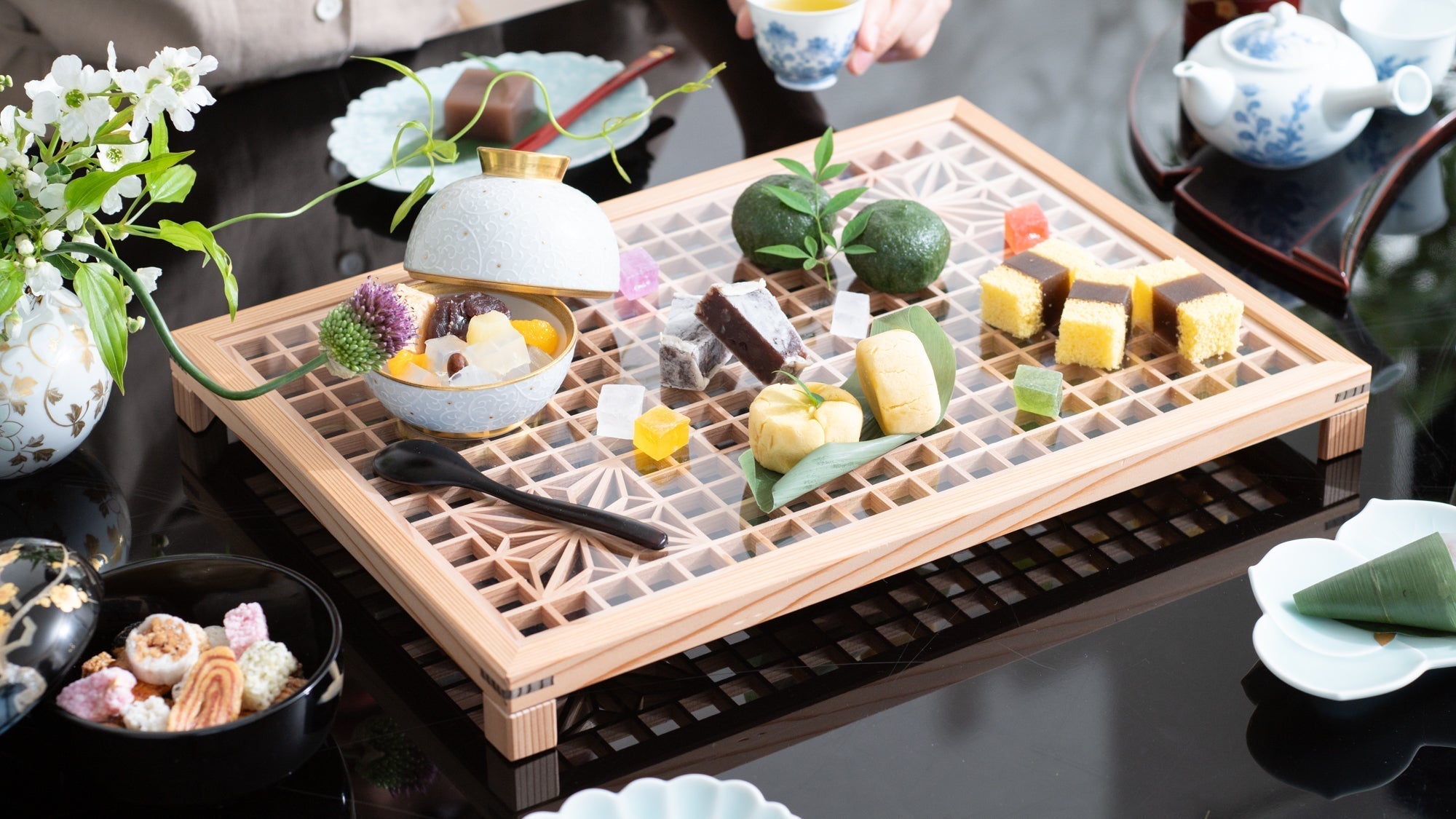
Sushi on Modern Kutani Ware
